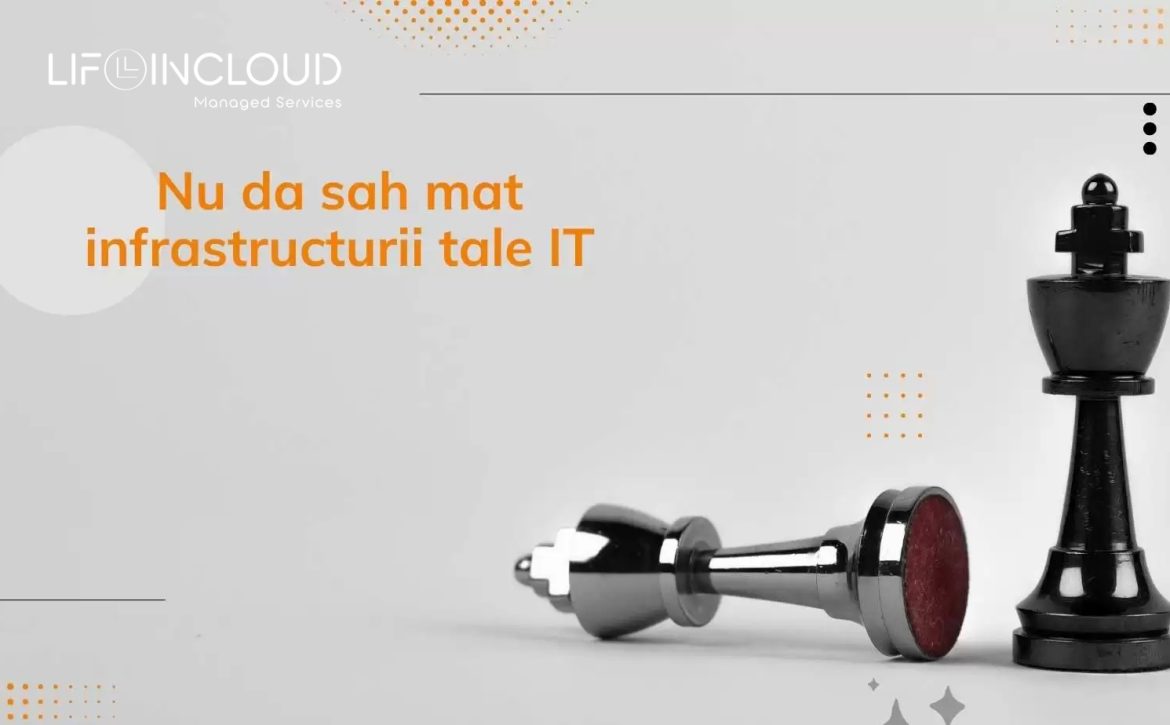How not to checkmate your IT infrastructure
Based on Patrick Bet-David’s book, Your Next Five Moves, in which obvious analogies between chess and business strategies are presented, we have made a bridge to the IT field in the form of a description of a “strategic parties” between Infrastructure, Data-Center and Cybersecurity, where every decision and “piece” counts, with the winner being the end customer. In this context, we can draw inspiration from the world of chess to develop effective tactics and strategies for managing technology.
I don’t know how many of us have the ability of Elon Musk, a ferocious chess player, to think 12 moves ahead, averaging 5, while a grandmaster does it with 15. But I hope that by describing the main strategies we will develop our ability to anticipate rather than improvise.
Planning and Anticipation:
Just like in chess, where every move is carefully calculated, in IT infrastructure management, planning is the key to success. Anticipating future needs and potential threats is essential. In a well-managed data centre, each component and resource is strategically placed, like chess pieces occupy key positions on the board. In the most practical terms, it translates into the redundancy, security, flexibility and scalability offered by a cloud architecture, not a standalone one, and the ability to deal with multiple business scenarios.
Effective execution of strategies:
Chess teaches us that it’s not enough just to have a strategy, but also to execute it effectively. In IT management, implementing data-center solutions and cybersecurity measures requires precise execution. Like a well-placed chess move, each IT component must work in harmony to achieve the goals set, forming an IT ecosystem.
We are talking about the introduction of the function of “project manager” into the execution process. Moreover, sometimes you need to sacrifice to win, which may mean giving up the technologies or people that hold you back
Efficient resource management:
Chess teaches us to manage resources and distribute them strategically on the board. Similarly, in a data centre, resources such as storage capacity and processing power need to be allocated wisely to meet current requirements and anticipate future growth. A wrong choice can be tantamount to a poor move in chess, exposing potential vulnerabilities.
In the most practical terms we could translate it as follows – “don’t limit yourself to immediate needs, think ahead, this approach is the difference between survival and evolution”.
Cybersecurity: A match against invisible adversaries.
Chess is often compared to a fight against a clever opponent. In the world of cybersecurity, adversaries are at least as smart but also invisible. Like a chess master, cybersecurity teams must anticipate the moves of adversaries and place “pieces” (security solutions) in strategic locations to protect IT infrastructure.
In short, we can translate it as follows – “leave your ego aside and confirm your decisions through recurrent audits conducted on an outsourced basis”.
Adaptability to change:
In a game of chess, players have to adapt to their opponent’s moves. Similarly, in managing IT infrastructure, we need to be flexible and adapt to technological changes, new cyber threats and especially business evolution. The ability to make quick adjustments in implementing data-center and cybersecurity solutions can make all the difference in such a dynamic digital world.
Here are some specific strategies that can be used based on the chess analogy:
Controlling the centre:In chess, controlling the centre is essential to winning. In IT infrastructure management, this can be equated with control over critical data and systems. Effective control can be achieved through security measures, and easy access and processing of data through the framework in which it is hosted, preferably in a data-center environment, in a cloud architecture such as communicating vessels
Mobility: In chess, moving pieces are stronger than immobile ones. In IT infrastructure management, this can be equated with the ability to adapt quickly to changes in the IT environment. The fixed parts are the internal equipment, while a cloud system is the mobile equipment.
Challenging the other side: In chess, players must challenge their opponent to create opportunities to win. In IT infrastructure management, this can be equated with identifying and eliminating vulnerabilities in the infrastructure. Don’t declare that you are infallible, it is quite possible that someone will prove you wrong. Rather make a habit of learning and testing your knowledge.
IT can benefit significantly from a strategic approach to chess. In every move and every decision, we can see an opportunity to build and protect. Inspired by chess strategies, we can bring a dose of strategic computing to technology management, ensuring a solid and predictable game in the dynamic world of IT.

